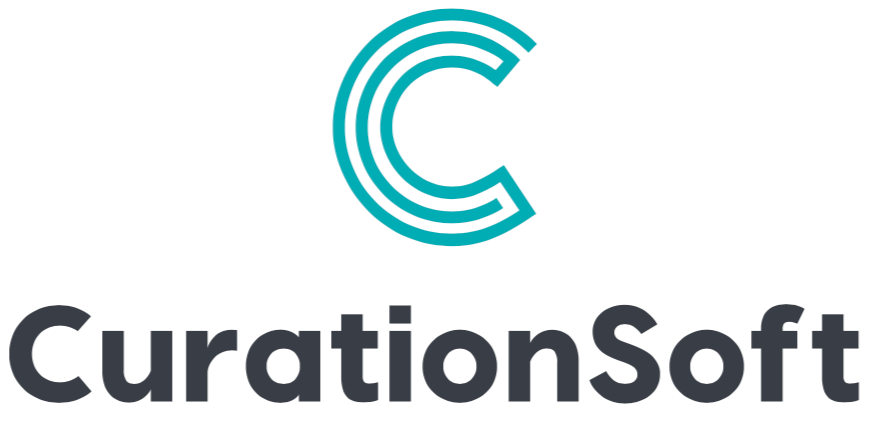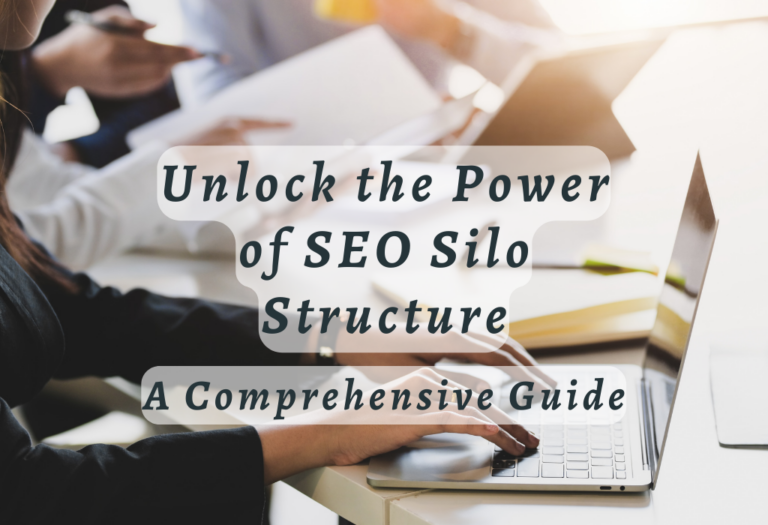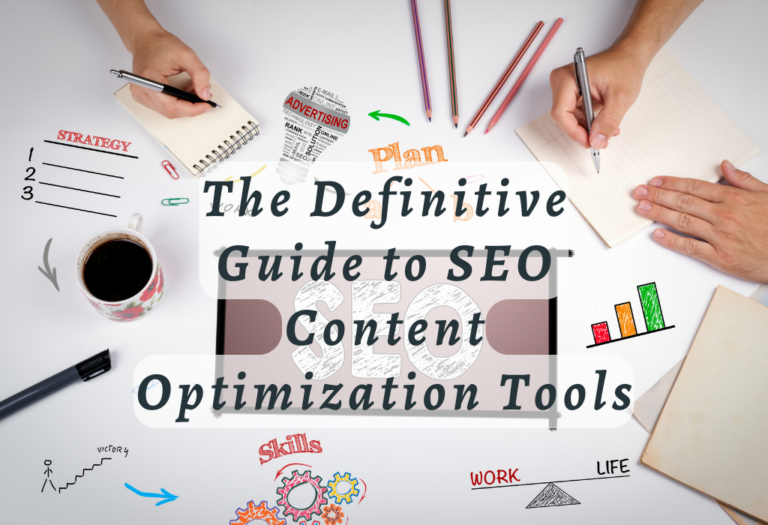Blog SEO Best Practices: Unlock Your Site’s Potential
Are you looking for ways to optimize your blog posts and increase their visibility? Look no further than blog SEO. SEO optimization is an essential part of content marketing that should not be overlooked. With the right techniques, you can ensure your blogs are seen by more people on search engine results pages (SERPs).
In this post, we’ll discuss best practices such as optimizing title tags, using H1-H3 subheadings effectively, and leveraging SEO plugins all with a focus on improving overall blog SEO performance. So let’s get started.

What is Blog Seo?
Blog SEO is the practice of optimizing blog content for a higher rank on search engines. This involves improving the website’s architecture, meta descriptions, page speed, and hyperlinks. Doing so can help to boost website performance, improve user experience and increase blog traffic.
When it comes to SEO, there are two main components: On-Page SEO and Off-Page SEO.
On-Page SEO
On-Page SEO focuses on making sure that all elements within your web pages are optimized for search engine crawlers such as titles, headings, images, and content. It also includes creating internal links between pages on your site which helps with navigation and usability for visitors while providing an opportunity to link related topics together in order to gain more visibility from search engines.
Off-Page SEO
Off-Page SEO refers to activities outside of your own website that you use in order to build authority around a certain topic or keyword phrase by gaining backlinks from other websites or blogs that have similar interests or topics as yours. This could include guest blogging opportunities where you write articles for another website in exchange for a link back to your own site or even social media marketing campaigns where you share relevant content with others who may be interested in what you have written about before they click through to read it themselves on your blog post page.
Why is blog SEO Important?
SEO is essential for any website that wants to increase its visibility in search engine results. Search engines use algorithms to determine which websites are most relevant and authoritative for a given query, and blog SEO helps ensure your content meets the criteria of these algorithms.
When done correctly, blog SEO can help you reach more people who are interested in what you have to offer. It also helps improve user experience by making it easier for visitors to find the information they’re looking for on your site.
Plan Your Content With Keyword Research
Keyword research is an essential part of any content marketing and SEO strategy. It helps you discover topics your users are interested in based on data from search engines, so you can create content that resonates with them. By understanding what people are searching for, you can craft blog posts that will drive more traffic to your website.
When doing keyword research, it’s important to consider the following factors:
• Search volume
This indicates how many people are looking for a particular topic or phrase each month. The higher the search volume, the more potential there is for organic traffic.
• Competition
If there’s a lot of competition for a certain keyword or phrase, it may be difficult to rank highly in the SERPs (search engine results pages). Look at both paid and organic competition when researching keywords.
• Relevance
Make sure the keywords you choose relate directly to your blog post topic and target audience. Relevant keywords will help ensure that your content reaches its intended audience and drives conversions as well as clicks.
• Trends
Monitor changes in search trends over time so you know which topics have staying power and which ones may not be worth investing too much time into writing about right now but could become popular later on down the line.
Understand Search Intent
When creating content for your blog post, it is important to understand the search intent of the keyword you are targeting. Search intent refers to why someone conducts a specific search and what they are looking for when they do so. Knowing this can help you create content that meets their needs and encourages them to stay on your page.
Google is one way to determine search intent by looking at the results for a given key phrase. For example, if you were targeting “SEO” as a keyword, Google would likely show both beginner guides and definitions of SEO in its results indicating that most users are probably looking for an introduction or guide on SEO rather than more advanced information about it.
Semrush magic keyword tool is another tool that can be used to identify search intent by analyzing keywords related to your target phrase and seeing how often each type of result appears in searches (e.g., informational articles versus product reviews). This will give you an idea of what kind of content people are expecting when they enter certain queries into Google or other search engines.
Finally, understanding user behavior patterns can also provide insight into their intentions behind searching particular terms such as whether they’re researching something before making a purchase decision or simply trying to find out more information about a topic quickly without having any intention of buying anything related to it.
By knowing this ahead of time, you can tailor your content accordingly and make sure it meets readers’ expectations while providing value at the same time.
Optimize the Length of Your Blog Post
When it comes to blog post length, there is no one-size-fits-all answer. However, the ideal length for SEO purposes is 2,100-2,400 words according to HubSpot data.
While longer posts are favored by Google and can help boost your search engine rankings, they can also be offputting if they’re too long or not well-written. To ensure that your content engages readers and keeps them on the page for longer periods of time without overwhelming them with information overload, you should aim for a balance between quality and quantity.
Make sure every word adds value to your post; don’t add filler just to increase the word count as this will make your post less engaging and authoritative which could result in higher bounce rates. Additionally, only write long blog posts when you know you have the skill set necessary to craft an interesting piece of content that provides useful information while being easy on the eyes and brain.
Focus on Readability
Content marketing and SEO go hand in hand. To make sure your blog posts are both readable and optimized for search engines, you need to focus on readability. This means breaking up long paragraphs into shorter sentences and using subheadings, images, quotes, and bullet lists to keep readers engaged. Additionally, tools like AIOSEO can help you identify any readability issues with your content so that you can make improvements accordingly. Finally, don’t forget about the importance of a good title; it should be catchy yet relevant to the topic at hand. With these tips in mind, you’ll be able to create content that is both reader-friendly and SEO-friendly.
Optimize Your Blog Post Title Tag
Title tags are one of the most important elements of a blog post when it comes to SEO. They are used by search engines to determine what your page is about and how relevant it is for a particular query. Crafting an effective title tag can help you rank higher in search engine results, resulting in more organic traffic to your website.
When creating a title tag, make sure that it accurately reflects the content on the page and contains keywords related to the topic. It should also be concise and easy to read; avoid using long phrases or overly complicated words. Additionally, try to keep your titles under 60 characters so they don’t get cut off in search engine results pages (SERPs).
What is a Title Tag?
A title tag is an HTML element that specifies the title of a web page. It appears in three key places: browsers, search engine results pages (SERPs), and external websites. The title tag should be written to accurately describe the content of the page and include relevant keywords so that it can help boost your SEO rankings.
How to Write an Effective Title Tag?
When writing an effective title tag, there are several things you should keep in mind. First, make sure your title accurately reflects what’s on the page; don’t stuff it with irrelevant keywords or phrases just for SEO purposes. Second, try to keep it short ideally under 60 characters as longer titles may get truncated by search engines or social media sites when shared externally. Finally, consider adding modifiers such as “best” or “guide” to make your post stand out from others in SERPs and attract more clicks from potential readers.
Best Practices for Optimizing Your Title Tags:
To ensure that your blog posts have optimized titles tags for maximum visibility and click-through rate (CTR), here are some best practices you should follow:
Optimizing your blog post title tag is a key element of SEO and will help readers easily identify the topic of your content. Now let’s look at how to use H1, H2, and H3 subheadings for maximum impact.
Utilize H1, H2, and H3 Subheadings
Headings are a great way to break up content into easily digestible chunks for readers and search engines alike.
Don’t overuse any heading
When creating headings for any type of web page or blog post, make sure that you use keywords related to the topic being discussed so that search engine crawlers can understand what kind of information is contained in each section. Additionally, try not to overuse any one heading level; too many H1s may confuse visitors while too many H3s could make your text look cluttered and disorganized.
Create Evergreen URLs
Creating evergreen URLs is an important part of content marketing and SEO. An evergreen URL is one that remains relevant over time, making it easy to remember and use again in the future. This type of URL should be concise, descriptive, and keyword-rich so search engines can easily index your content. When creating a new page or post on your website, you should take the time to craft an effective URL structure that will stand the test of time. Here are some tips for crafting an evergreen URL:
1. Keep It Short & Descriptive
Long URLs with multiple parameters can be confusing for both users and search engine crawlers alike. Try to keep your URLs as short as possible while still providing enough information about what’s contained on the page itself.
2. Include Keywords
Including keywords in your URLs helps search engines understand what topics are covered on each page, which can help improve rankings in organic search results pages (SERPs). For example, if you have a blog post about SEO strategies, including “SEO” or “search engine optimization” in the URL would be beneficial.
3. Avoid Dynamic Parameters
Dynamic parameters can make it difficult for search engines to crawl and index webpages correctly since they need to provide more context around what’s being displayed on each page or post. Instead, try using static parameters such as hyphens (-) between words within a single phrase.
4. Use Lowercase Letters Only
Using uppercase letters within URLs may cause issues with duplicate content because some servers treat them differently than lowercase letters when crawling websites. To avoid this issue altogether stick with all lowercase letters when crafting your URLs whenever possible.
Establishing a consistent structure across all pages on your site makes it easier for visitors to find their way around without getting lost. Consider setting up rules regarding how long each section of the path should be or how many words you want to be included before adding another slash (/), etc. This will ensure consistency throughout all levels of navigation from top-level categories down through subcategories and individual posts or pages.
By following these tips you’ll create more memorable evergreen URLs that remain relevant over time while also helping to increase visibility in SERPs, ultimately leading to more traffic from organic sources.
Key Takeaway: Creating an evergreen URL structure is essential for content marketing and SEO. Here are some tips: keep it short & descriptive, include keywords, avoid dynamic parameters, and use lowercase letters only.
Write Compelling Meta Descriptions
Meta descriptions are an important part of SEO. They appear in search engine results pages (SERPs) and give readers a brief overview of what the page is about. Writing compelling meta descriptions can help draw readers to your blog post, as they will be more likely to click on it if the description looks interesting.
Keep them Short:
When writing meta descriptions, make sure you keep them concise yet informative. Aim for around 150-160 characters so that all of your content fits within one line in SERPs. Make sure you include relevant keywords so that people searching for those terms will find your post easily.
Keep them curious:
It’s also important to write with a tone that entices readers to click on your link rather than someone else’s use active language and avoid generic phrases like “learn more” or “click here” which don’t tell users anything about what they’ll find when they get there. Instead, focus on conveying the value of clicking through by highlighting unique features or benefits related to the topic at hand.
Use Questions:
In addition, try using questions or calls-to-action in order to encourage clicks from curious searchers who may not have been looking specifically for this information but are interested enough by the title and description to take a look anyway. This can be especially effective when targeting long tail keywords – ones made up of multiple words instead of just one or two – since these tend to attract less competitive traffic overall but still provide plenty of potential visitors if done correctly.
Keep them Unique:
Finally, remember that meta descriptions should always be unique; duplicate content won’t do much good for either SEO or user experience purposes. Take some time each week (or month) to review existing posts and update their titles/descriptions accordingly this small effort could go a long way towards improving organic search visibility over time.
Meta descriptions are an essential part of blog SEO, as they help to draw in readers and increase website traffic. Now let’s look at how internal linking strategies can further optimize your content for search engine rankings.
Key Takeaway: Writing compelling meta descriptions can help draw readers to your blog post and improve SEO visibility. To do this, make sure you keep them concise yet informative (150-160 characters), include relevant keywords, use active language & unique features and benefits in the description, and avoid duplicate content.
Link to Relevant Internal and External Resources
Content marketing and SEO go hand in hand. One of the most important aspects of content marketing is linking to relevant internal and external resources. This helps search engines understand your website better, as well as gives readers more information about a particular topic.
Overall, both internal and external linking play an essential role in content marketing success by helping build relationships between different pieces of content while improving overall SEO performance at the same time, making them two key elements for any successful digital marketer’s toolkit.
Add Images and Videos to Your Blog Posts
Adding images and videos to your blog posts is an essential part of content marketing. Not only do they make your post more engaging, but they also help with SEO.
When choosing images for your blog post, it’s important to make sure that you are using royalty-free images from sources such as Canva or Pexels. It’s also important to remember not to use any copyrighted material without permission.
To optimize the images for SEO purposes, you’ll need to resize them so that they fit within the width of your post space and compress them in order to improve page loading speed. For PNG files, TinyPNG can be used while Compress JPEG can be used for JPG files. Once uploaded into the block editor in WordPress, click on the image and add Alt text in Image Settings located on the right side of the page. Make sure Block (for block editor) is selected at the top right corner of your page before adding Alt text; otherwise Image settings won’t appear as an option.
Videos are even more engaging than images and provide a great way to convert blog posts into different formats like slideshows or vlogs giving readers another way to consume content about a topic they’re interested in learning about.
Noindex Category & Tag Pages
When it comes to SEO, one of the most important things you can do is nonindex category and tag pages. This means that these pages will not appear in search engine results pages (SERPs). If they are indexed, this could have a negative effect on your overall SEO performance.
What Are Category & Tag Pages?
Category and tag pages are part of the structure of a website. They help organize content into categories or topics so that visitors can easily find what they’re looking for. Categories are usually broader topics while tags are more specific keywords related to those topics. For example, if you had an article about hiking boots, you might categorize it under “Outdoor Gear” and add tags such as “hiking boots” or “footwear”.
Why Should You Noindex These Pages?
The reason why it’s important to non-index category and tag pages is that these types of pages don’t typically provide much value to users who visit them from SERPs since they contain duplicate content from other posts within the same topic area. Additionally, having too many indexable URLs on your site can lead to thin content issues which can negatively affect your rankings in search engines like Google.
How Do You Noindex These Pages?
There are several ways you can go about no indexing category and tag pages depending on what type of CMS (content management system) you’re using for your website or blog. The easiest way is by using an SEO plugin such as Yoast SEO which allows you to quickly set up robots meta tags with just a few clicks so that certain page types won’t be indexed by search engines like Google or Bing.
Key Takeaway: Noindexing category and tag pages are essential for SEO performance as they tend to contain duplicate content which can lead to thin content issues. To noindex these pages, you can use an SEO plugin such as Yoast SEO or manually add robots meta tags via code edits.
Encourage Social Media Shares
Social media is a powerful tool for content marketing and SEO. When you share your content on social media, it increases the chances of people seeing it, engaging with it, and linking to it from their own sites or social profiles. This can help boost your rankings in search engines like Google.
Use relevant Keywords
To maximize the potential of your content’s reach on social media, make sure that you use relevant hashtags and keywords when sharing links to your blog posts or other pieces of content. You should also include images or videos whenever possible as these tend to get more engagement than plain text posts. Additionally, consider using popular influencers in your niche who have large followings they may be willing to promote your content if you offer them something in return such as free products or services.
Post that on various platforms:
When creating new blog posts, think about how they can be used across multiple platforms such as Twitter and Facebook so that you can get maximum exposure for each piece of content. Also, look into using tools like Hootsuite which allow you to schedule out tweets and other messages ahead of time so that they are automatically posted at optimal times throughout the day when most people are online.
FAQ in Relation to Blog SEO:
Conclusion
In conclusion, blog SEO is an important part of any content marketing strategy. By following the best practices outlined in this article, you can ensure that your blog posts are optimized for search engine visibility and engagement. Optimizing your title tag, utilizing H1-H3 subheadings, leveraging SEO plugins, creating evergreen URLs, writing compelling meta descriptions and internal linking strategies are all key components to successful blog SEO. Additionally, it’s important to remember to noindex category & tag pages as well as create a sitemap and monitor with Search Console. With these tips in mind, you will be on your way to optimizing your blog posts for success.
Are you looking for ways to increase your blog’s SEO visibility? Curationsoft provides a suite of content marketing and SEO solutions that can help you reach more potential customers, improve rankings in search engine results pages (SERPs), and drive targeted traffic to your website. We provide customized strategies tailored specifically to the needs of each client, so don’t hesitate to get started today.






